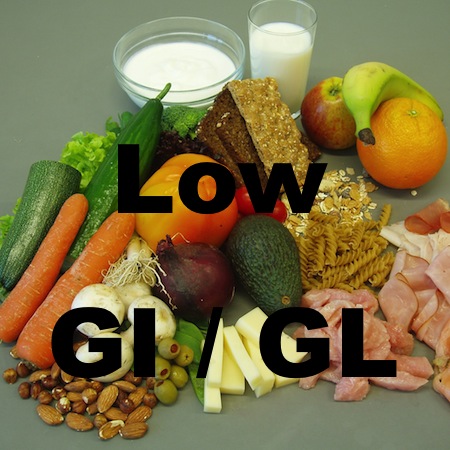Fooducate Blog - Glycemic Index Approach to Your Diet – Pros and Cons |
| Glycemic Index Approach to Your Diet – Pros and Cons Posted: 12 Aug 2012 05:30 AM PDT
New here? Get our iPhone or Android App to scan & choose healthy groceries! Or try Fooducate's Online Nutrition App! Earlier this summer, research published in the Journal of the American Medical Association added a new twist to the classic low fat vs. low carb diet debate. Measurements of bodily energy expenditure and hormone levels were taken of 3 groups of people who had partaken in recent weight loss and were now in weight maintenance mode. The three groups ate one of 3 diet types:
The group with the best outcome after several weeks? Group number 2, consuming a low glycemic diet, fared the best. The low fat diet slowed down the metabolism the most. The low carb diet negatively affected hormone levels, increasing chances of inflammation and disease. Conclusion: a low glycemic index diet as the best approach to weight loss and maintenance over time. But what exactly is a low glycemic index diet? What is glycemic load? The glycemic index (GI) is a measurement of how a food raises blood glucose levels. Blood glucose is colloquially referred to as blood sugar.GI is an important measurement for people living with diabetes who need to control their blood glucose through diet, oral medication, and insulin injections. But it is also important for healthy individuals because spikes in blood sugar often come with a crash an hour or 2 later which leads to hunger pangs and a tendency to eat more. This leads to a vicious cycle of overeating and weight gain, and eventually can lead to diabetes. The glycemic index range is 0-100. The higher the GI, the more blood glucose will rise. Pure glucose has a GI of 100.
Refined carbohydrates have a high glycemic index, but unprocessed carbs from fresh produce and whole grains usually have a low to medium GI. Meats usually have a low glycemic index. The system sounds great in theory. It would be wonderful if every food item had a little label telling us its glycemic index. Unfortunately, there are several practical limitations:
Glycemic Load is a better indicator for the rise in blood glucose because it takes into account the actual portion size consumed. Glycemic load is defined as the grams of available carbs in a serving times its GI divided by 100.
An apple with a glycemic index of 34 will have a glycemic load of only 7 for a 3 ounce serving. A double sized serving will double the glycemic load. Additional factors that affect the glycemic index of foods:
Important! Many nutritious foods have a higher GI than foods with little nutritional value. For example, oatmeal has a higher GI than chocolate. Use of the glycemic index needs to be balanced with basic nutrition principles of variety for healthful foods and moderation of foods with few nutrients. What to do at the supermarket: You won’t find the GI / GL of products on the packaging, albeit a few rare cases. However, if you choose whole grains, fresh or frozen produce, lean meats and dairy, and add legumes, nuts, and healthy oils, you are on the right track. Don’t forget that calories from a diet of real foods are still calories. Eat too many, and you will gain weight. Get Fooducated: Follow us on twitter: twitter.com/fooducate on facebook: facebook.com/fooducate |
| You are subscribed to email updates from To stop receiving these emails, you may unsubscribe now. | Email delivery powered by Google |
| Google Inc., 20 West Kinzie, Chicago IL USA 60610 | |




No comments:
Post a Comment